
Butterfly gardening is gaining popularity, and with good reason! Any flower garden instantly becomes more interesting when winged beauties stop by to sip sweet nectar from the blooms. But the fluttering adults represent just one stage in the life of a butterfly. To support a healthy population of these colorful pollinators, it's key to provide food for their caterpillars as well.
Nectar Plants vs. Host Plants
Most adult butterflies are attracted to flowers, and many sample from an array of blooms, as long as they have a good nectar supply and enough space to land. Popular choices, such as coneflowers, zinnias or verbenas, may get visits from dozens of butterfly species.
But when it comes to host plants for the caterpillars (also called larvae, the plural for larva), it's a different story. The larvae of most butterfly species are very particular and will feed on only a few kinds of plants. For example, monarch caterpillars are famous for munching solely on milkweeds. Many people now plant milkweeds to support these orange-and-black fliers, but those plants are no help for the vast majority of butterflies that can't digest milkweeds. So while it's possible to attract many kinds of adult butterflies with just a few nectar plants, growing host plants requires more attention and variety.
Be a Good Larvae Host
To boost your success in hosting butterfly larvae, find a good native plant nursery in your region, and talk with the staff about the possibilities for your garden. Although there are exceptions, local native plant species almost always make the best hosts for nearby butterflies.
Diese Geschichte stammt aus der June/July 2023-Ausgabe von Birds & Blooms.
Starten Sie Ihre 7-tägige kostenlose Testversion von Magzter GOLD, um auf Tausende kuratierte Premium-Storys sowie über 8.000 Zeitschriften und Zeitungen zuzugreifen.
Bereits Abonnent ? Anmelden
Diese Geschichte stammt aus der June/July 2023-Ausgabe von Birds & Blooms.
Starten Sie Ihre 7-tägige kostenlose Testversion von Magzter GOLD, um auf Tausende kuratierte Premium-Storys sowie über 8.000 Zeitschriften und Zeitungen zuzugreifen.
Bereits Abonnent? Anmelden
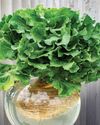
Basics of Hydroponics
Use these top tips and plant picks to have a successful soil-free garden
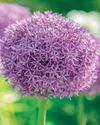
Rooted in Resilience
These hardy perennials will thrive in most zones
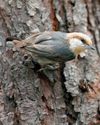
Social and Supportive
Brown-headed nuthatches take a helpful approach to raising their young

All About Owl Pellets
And why you should give a hoot about them
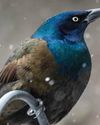
Ask the Experts
Advice from our pros about houseplants, bird feeding and more
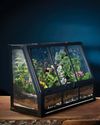
BRING THE OUTDOORS IN
Making a terrarium is about as close as you can get to a Zen DIY project. Once you have gathered the proper materials and squared away your plant selections, it's as simple as layering it all together and watching your mini ecosystem thrive. Here, I'll walk you through my foolproof process and cover all the required elements for good filtration, healthy soil, strong root growth and resistance against fungus and disease.

GROW THIS. NOT THAT
Six easy-to-grow houseplants—and six that may not be the right choice for you

Winter MAGIC
Forecasts may be frigid, but grab your binoculars because birding opportunities are still incredible

Sense or Nonsense? - Why some birds can taste and smell - but others can't
Does a porcelain berry taste like a blueberry to a gray catbird? Does a block of lard smell like frying bacon to a northern flicker? The short answer is no. While some avian species do have a well-adapted sense of taste or smell, they can't distinguish between flavors and odors the way humans can. They're not picking up every ingredient in the suet you put out, says José Ramírez-Garofalo, an ornithology researcher at Rutgers University in New Jersey and the director of Freshkills Biological Station in Staten Island, New York.

Maple Mania - Amazing facts about this fall foliage mainstay
Amazing facts about this fall foliage mainstay